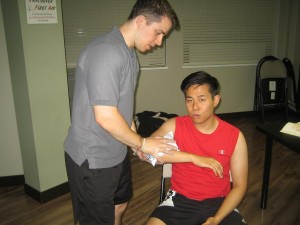The humerus is a long bone situated in between the elbow and shoulder joints in the upper arm. The bone is comprised of three structural parts – proximal humerus, shaft and distal humerus. The proximal humerus is a component of the joint in the shoulder while the distal humerus is a component of the joint in the elbow. As for the shaft, it can break due to trauma such as vehicular accidents, falls, birth trauma and even gunshot wounds. In some cases, a humerus fracture can occur due to a tumor present in the bone.
The shaft of the humerus can become fractured close to the shoulder, close to the elbow or between the elbow and the shoulder. In most cases, they are usually closed injuries in which there is no break in the skin over the fracture site. Once the skin is broken, it is called as an open fracture. The treatment options for a humerus fracture involve the application of a splint but in severe cases, it would require surgery to an improved outcome. You can learn more about splinting by enrolling in a first aid class today.
When a splint is required for a humerus fracture
In most cases of humerus fractures, they are treated with an initial coaptation splint and followed by either a functional brace or a hanging arm cast. Surgical repair might be required if there is injury to the vessels, open fracture, severe soft tissue injury, pathological fracture as well as severe displacement of the fracture fragments. The fractures on the distal or proximal humerus are not usually treated using coaptation splinting.

What is a coaptation splint?
It is important to note that a coaptation splint is a U-shaped splint that is positioned beneath the armpit which is wrapped around the elbow and ends at the top of the shoulder. The whole length of the humerus is covered by the splint that is heavily padded. This splint is used for 7-10 days until a definitive treatment is provided such as a cast, functional brace or surgery. Those who wear a sling can help provide comfort after the coaptation splint is applied.
Bracing
Functional bracing is applied 7-10 days after the individual sustains a humerus fracture, but can be used as an initial mode of treatment. Take note that functional bracing and a hanging cast are the definitive options for managing humerus fractures.
The tension on the fracture brace can be modified to help improve the alignment of the fracture fragments. The brace can extend from below the shoulder up to the elbow in order to overlie the humerus. This brace allows a certain degree of movement at the site of the fracture during the healing process. Additionally, it also allows shoulder and elbow movement which helps maintain the range of motion of these joints during the healing process.
